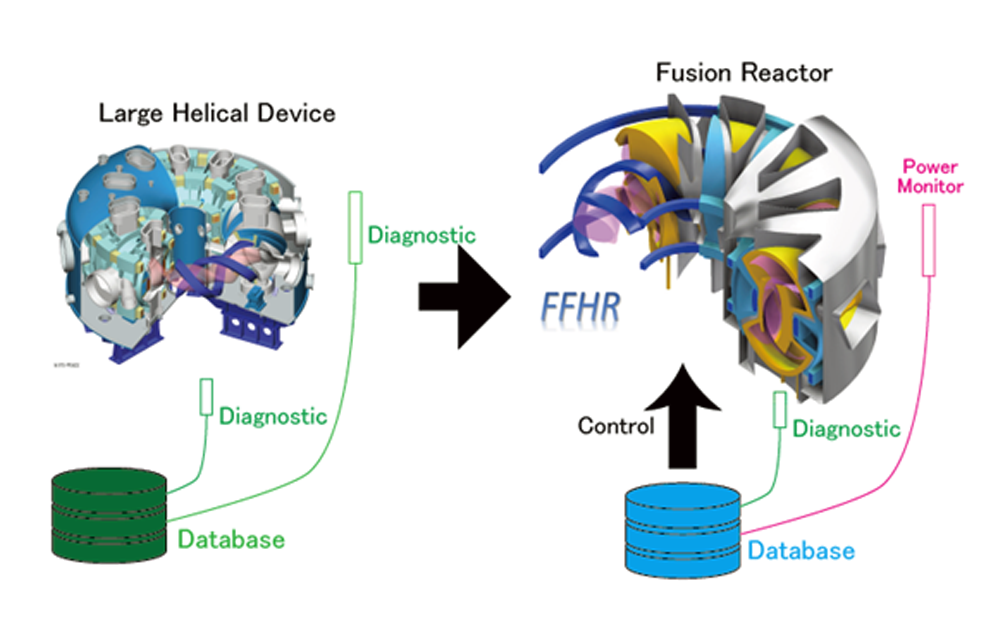Control of energy output from fusion plasma
We applied the regression analysis, which shows the dependence of one parameter on the other parameters, to investigate the relationship between the neutron emission rate and externally controllable parameters in the LHD deuterium experiment. We found that the neutron emission rate can be expressed by the formula consisting of plasma density and heating power. Hence, we obtained a method to control the fusion energy in a future burning plasma. A trial of extending the total neutron emission rate record in steady-state discharge was performed based on a data-driven approach. We successfully updated the total neutron emission rate record supported by the regression expression.

In a future fusion reactor, energy will be produced by deuterium and tritium reactions. We can control the fusion output by changing the plasma parameters such as density and heating power. The fusion reactor will be controlled by a minimized number of measured and controlled parameters. To execute the control, we need to know the dependence of fusion output on these measured and controlled parameters.
The regression analysis for total neutron emission rate values, which used the externally controllable parameters obtained during the 19th and 21st LHD campaigns, such as line-averaged electron density and the penetration power of NB injections, was utilized to inspect the importance of each controllable parameter for achieving a high total neutron emission rate.
A trial for extending the total neutron emission rate record in steady-state discharge was performed in the LHD, based on a data-driven approach. The regression expression of the total neutron emission rate, using externally controllable parameters, was obtained using the total neutron emission rate database established during the 19th and 21st LHD experimental campaigns. Data points were selected according to the general restriction of fulfilling high total neutron emission rate discharge conditions.It was found that the injection power of N-NB was more important than the line averaged density and the injection power of P-NB. In the 22nd campaign, the high Sn record in steady-state discharge was successfully updated, based on the previously deduced regression expression. The new total neutron emission rate record in steady-state discharge, using a deuterium gas puff, is 3.7×1015. Even though this regression expression is valid only within the range of the database, it is demonstrated to be effective as a plausible guideline for updating the total neutron emission rate record gradually beyond the current database.
This research result was published on February 26, 2021 in Fusion Engineering and Design, an international journal on fusion energy and technology.
